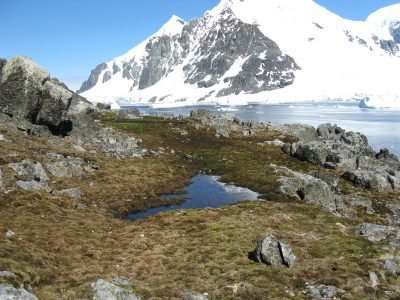Fungi respire millennium-old carbon from Antarctic soil

Fungi in Antarctic soils release carbon, as carbon dioxide, that is more than a thousand years old, a team led by scientists at the British Antarctic Survey (BAS) has found. This discovery sheds light on how carbon is released into the atmosphere as polar regions warm.
The findings, published this month (May 2018) in Nature Scientific Reports, show for the first time that different species of fungi decompose components of soil organic matter to respire carbon of different ages, including ancient carbon which was fixed from the atmosphere up to 1,200 years ago.
Soil from under Antarctic Hairgrass was taken from Léonie Island, near Rothera Research Station on the Antarctic Peninsula, and brought back to BAS headquarters in Cambridge. The sterilised soils were inoculated with fungi from the natural Antarctic environment, put into sealed jars and incubated at 4 °C in the lab.
The carbon dioxide emitted by the fungi from the soils was collected and analysed by the NERC Radiocarbon Facility. To their surprise, the scientists found that some of the carbon was about 1,200 years old.
BAS ecologist and lead author Dr Kevin Newsham said: "This was an unexpected finding, showing carbon that had originally been fixed from the atmosphere from as far back as around 800 AD is stored in soil under grasses on the Antarctic Peninsula. We know that processes are very slow in the cold environment of Antarctica, but carbon could be stored in undecomposed organic matter of Antarctic soils for much longer than we previously thought.
"This is important if we want to understand which carbon fractions are released into the atmosphere as temperatures rise in polar regions."
It is predicted that a significant amount of carbon will be respired from thawed layers of permafrost by soil microbes as the Earth's climate warms (and more so in the Arctic, where there is far more soil and peat than in the Antarctic), and so determining the decomposition processes influencing its release to the atmosphere is pivotal to understanding the carbon cycle and impacts on the biosphere.
More information: Kevin K. Newsham et al. Discrete taxa of saprotrophic fungi respire different ages of carbon from Antarctic soils, Scientific Reports (2018). DOI: 10.1038/s41598-018-25877-9
Journal information: Scientific Reports
Provided by British Antarctic Survey



















